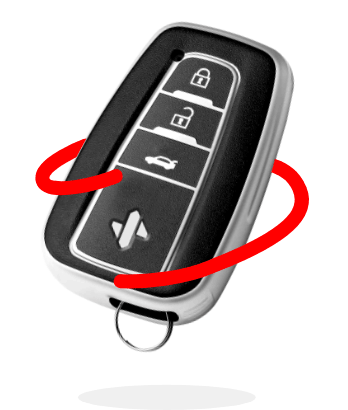Learning to drive is a rite of passage for many teenagers in the United States, symbolizing freedom and a step toward adulthood. However, the age at which you can legally take the wheel varies from state to state, thanks to differing regulations and driving laws.
This comprehensive guide will help you understand the minimum driving age requirements across the U.S., shedding light on how young Americans can gear up for their driving journey.
THE CONCEPT OF GRADUATED DRIVER LICENSING (GDL)
Before diving into the specifics, it's crucial to understand the Graduated Driver Licensing (GDL) system – a structured approach to granting young drivers their driving privileges. The GDL is designed to reduce the risks new drivers face by gradually introducing them to more complex driving situations.
It typically involves three stages: a learner's permit, an intermediate license, and finally, a full unrestricted license. Each stage comes with its eligibility criteria, including age restrictions.
MINIMUM DRIVING AGE BY STATE: A COMPREHENSIVE GUIDE
Learner's Permit Age Requirements
Becoming a fully licensed driver begins with obtaining a learner's permit. This stage allows teens to drive under supervision, helping them gain valuable experience behind the wheel.
Most states set the minimum age for a learner's permit at 15 or 16, but exceptions exist. For instance, Alaska allows teens to start learning at 14, while the age might be slightly higher in other states.
Intermediate License Age Requirements
Young drivers can move on to the intermediate license stage after fulfilling specific requirements, such as a minimum number of supervised driving hours and holding the learner's permit for a certain period.
This phase introduces more freedom but often comes with restrictions, like no unsupervised driving at night or limits on the number of passengers under a certain age. The typical age for advancing to this stage varies from 16 to 17 years old, depending on the state.
Full Unrestricted License Age Requirements
The final milestone is obtaining a full, unrestricted driver's license. This usually requires passing a road test and having a clean driving record during the intermediate license stage.
The minimum age for this achievement ranges from 16 to 18. Some states, like New Jersey, have set the bar at 18, prioritizing additional experience and maturity before granting full driving privileges.
|
State |
Minimum age for a learner's permit |
Minimum age for a full driver's license |
|
Alabama |
15 |
17 |
|
Alaska |
14 |
16 and a half |
|
Arizona |
15 and a half |
16 and a half |
|
Arkansas |
14 |
18 |
|
California |
15 and a half |
17 |
|
Colorado |
15 |
17 |
|
Connecticut |
16 |
18 |
|
Delaware |
16 |
17 |
|
District of Columbia |
16 |
18 |
|
Florida |
15 |
18 |
|
Georgia |
15 |
18 |
|
Hawaii |
15 and a half |
17 |
|
Idaho |
14 and a half |
16 |
|
Illinois |
15 |
18 |
|
Indiana |
15 |
21 |
|
Iowa |
14 |
17 |
|
Kansas |
14 |
16 and a half |
|
Kentucky |
16 |
17 |
|
Louisiana |
15 |
17 |
|
Maine |
15 |
16 and 9 months |
|
Maryland |
15 and 9 months |
18 |
|
Massachusetts |
16 |
18 |
|
Michigan |
14 and 9 months |
17 |
|
Minnesota |
15 |
17 |
|
Mississippi |
15 |
16 and a half |
|
Missouri |
15 |
18 |
|
Montana |
14 and a half |
16 |
|
Nebraska |
15 |
17 |
|
Nevada |
15 and a half |
18 |
|
New Hampshire |
15 and a half |
18 |
|
New Jersey |
16 |
18 |
|
New Mexico |
15 |
16 and a half |
|
New York |
16 |
17 |
|
North Carolina |
15 |
16 and a half |
|
North Dakota |
14 |
16 |
|
Ohio |
15 and a half |
18 |
|
Oklahoma |
15 and a half |
16 and a half |
|
Oregon |
15 |
17 |
|
Pennsylvania |
16 |
17 and a half |
|
Rhode Island |
16 |
17 and a half |
|
South Carolina |
15 |
16 and a half |
|
South Dakota |
14 |
16 |
|
Tennessee |
15 |
17 |
|
Texas |
15 |
18 |
|
Utah |
15 |
17 |
|
Vermont |
15 |
16 and a half |
|
Virginia |
15 and a half |
18 |
|
Washington |
15 |
18 |
|
West Virginia |
15 |
17 |
|
Wisconsin |
15 and a half |
18 |
|
Wyoming |
15 |
16 and a half |
EXCEPTIONS & SPECIAL CIRCUMSTANCES
Life doesn't always fit neatly into regulations. Recognizing this, many states offer exceptions for earlier driving under specific conditions, such as hardship licenses for those who need to drive for family or employment reasons.
Additionally, some states have unique provisions that allow for flexibility in licensing young drivers, adapting to the needs of their residents.
THE IMPACT OF DRIVING AGE ON TEEN SAFETY & MOBILITY
The debate over the optimal driving age balances teen safety with the benefits of increased mobility. Higher driving ages are associated with reduced accident rates among teens, yet they can also limit independence and opportunities for young people – especially in areas with limited public transportation. Studies continue to explore these dynamics, seeking the best paths forward for both teen drivers and society.
AUTO INSURANCE & TEEN DRIVERS
Car insurance for young and teen drivers is a critical aspect of navigating the roadways safely and legally. Due to their inexperience behind the wheel and a statistically higher likelihood of being involved in accidents, insurance premiums for these new drivers are typically much higher than for more seasoned motorists.
Insurance companies assess the risk associated with insuring young drivers based on a variety of factors, including age, driving history, and sometimes even academic performance. To mitigate the cost, many insurers offer discounts for good grades, completion of approved driver's education courses, or for being added to a parent's policy rather than obtaining a separate one.
Despite the higher costs, having adequate insurance coverage is essential for young drivers. It not only protects them financially in the event of an accident but also instills a sense of responsibility and awareness of the consequences of their driving behavior. As such, parents and guardians play a vital role in educating teen drivers about the importance of insurance and how to choose the right coverage to meet their needs while keeping costs as manageable as possible.
Understanding the driving age by state is more than a matter of legal compliance; it's about ensuring the safety and preparedness of young drivers as they embark on a significant life journey. By familiarizing yourself with your state's regulations and embracing safe driving practices, you can navigate the road ahead with confidence and responsibility.
If you need help finding the best car insurance coverage for the best price, speak to a SimplyIOA agent at 833.872.4467 or get an auto insurance quote online now.










